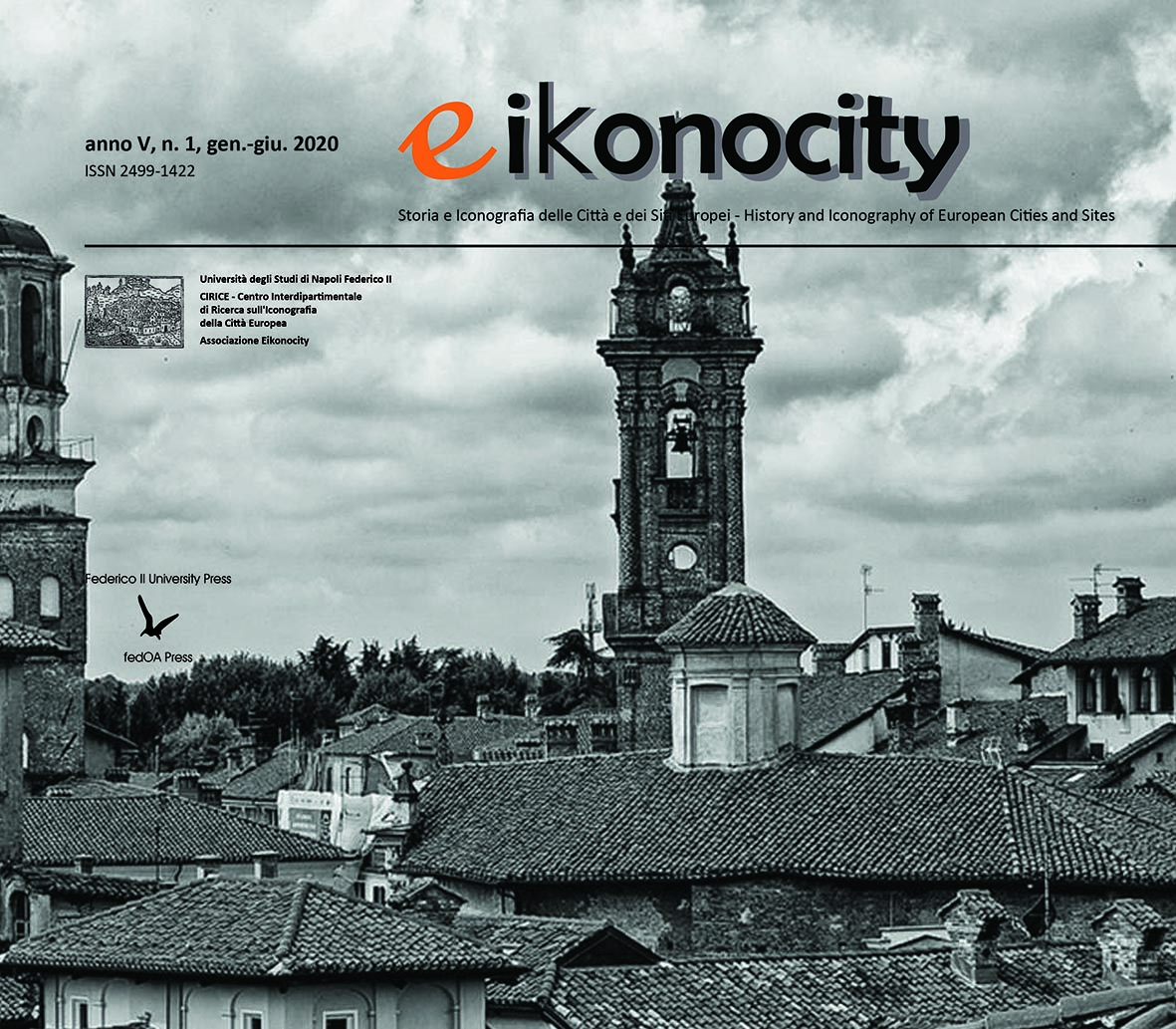Emerging urban landmarks as vulnerable heritage
Abstract
This issue of Eikonocity aims at bringing to the attention of scholars themes concerning the history and consequent vulnerability – mainly structural and aesthetic – of the ‘emerging’ elements of the historical buildings, conceived as tangible signs of the urban landscape identity in European historic centres. As recent Italian earthquakes have evidenced (L’Aquila, 2009; Emilia Romagna, 2012; Abruzzo and Umbria, 2016-2017), many historical buildings or parts of them, although having a significant role in the formation and expression of urban image, are highly at risk not only for physical safety but also for the collective memory they preserve. Visual poles as domes and towers, as authentic topoi of the city skyline, aggregate social values shared over the centuries and translated into landscape signs from different cultures during the history of local communities: they are important key-elements in the urban formation process intended as a long life collective project in which, as Michel Jacob pointed, citizens continually define their relationship with nature and territory. By the response these symbols of urban history are able to offer to natural or human hazards it largely descends the preservation of urban landscape image in the frame of identity and community cultural values.
Downloads
Copyright (c) 2020 Valentina Russo

This work is licensed under a Creative Commons Attribution 4.0 International License.
Eikonocity pubblica in internet, ad accesso aperto, con licenza:
|
|
CCPL Creative Commons Attribuzione 4.0 |
L'autore conserva il copyright sul suo contributo, consentendo tuttavia a chiunque "di riprodurre, distribuire, comunicare al pubblico, esporre in pubblico, rappresentare, eseguire e recitare l'opera", purché siano correttamente citati l'autore e il titolo della rivista. L’autore, al momento della proposta di pubblicazione, è inoltre tenuto a dichiarare che il contenuto e l’organizzazione dell’opera è originale e non compromette in alcun modo i diritti di terzi, né gli obblighi connessi alla salvaguardia di diritti morali ed economici di altri autori o di altri aventi diritto, sia per testi, immagini, foto, tabelle, sia per altre parti di cui il contributo può essere composto. L’autore dichiara altresì di essere a conoscenza delle sanzioni previste dal codice penale e dalle leggi speciali per l’ipotesi di falsità in atti ed uso di atti falsi, e che pertanto Eikonocity è esente da qualsiasi responsabilità di qualsivoglia natura, civile, amministrativa o penale, e sarà dall'autore tenuta indenne da qualsiasi richiesta o rivendicazione da parte di terzi.




